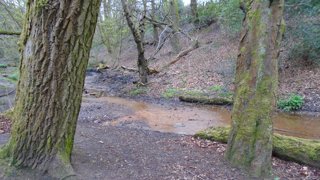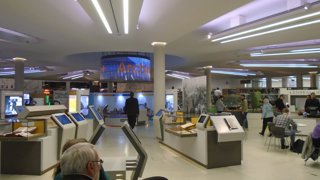We regularly spotlight recently published geography research from the Society’s leading international journals: Area, The Geographical Journal, Transactions of the Institute of British Geographers, and Geo: Geography and Environment. This month, we are zooming in on a paper from Area, which explores how creative methods such as photography and walking can be used to track people’s diverse relationships to the places around them.
Amy Barron is a social and cultural geographer based at the University of Manchester whose work focuses on lived experiences of urban inequalities over people’s life-course. In her recent paper, Amy uses photo go-alongs - a creative method which combines photography with walking interviews - to explore older people’s relationships with different places across Greater Manchester. We spoke with Amy to find out more about this project.
How can geographers help us create age-friendly cities?
I'm interested in people's everyday place-making practices (the routines and interactions that make places meaningful) and how these intersect with an individual's life-course and the life-course of a place. Geography helps me explore the connections between the intimate and personal, and the broader forces that shape our lives.Amy
The way we experience the places around us varies from person to person and from day to day.
What interests me most is that people can share the same street or park, but their experience of that place is extremely different because they bring their own memories and biographies. The meaning of place isn’t fixed. This means it is important we understand how people make sense of place in particular ways through their life-course.Amy
Think about your family. How might you experience a shopping centre or a high street differently to your grandparents? How might your experience of these places vary depending on how you are feeling, the time of day or the weather? Geographers play a central role in exploring these different experiences, helping us envision more inclusive places and cities.
The power of walking, talking and photographing together
So, how can we explore the ways in which different people relate to the places around them? Amy combined a traditional go-along method, where the researcher walks and talks with participants, with photo elicitation methods, where the researcher asks participants to photograph and reflect on things they find interesting.
While mobile methods capture in situ movement, they might lack the depth needed to understand the motivations behind the movement. Photographs can be open to multiple interpretations, making it challenging to draw conclusions. Adding movement and conversation to photography helps us understand why a photograph makes sense.Amy
Memories, identity and belonging
Walking, talking and photographing together revealed relationships between memories, identity and a sense of belonging. Whilst walking with 67-year-old Paul in Prestwich Clough, the significance of childhood memories emerged in his current understandings of place. As he captured a stream where he once played with friends, the present importance of a site that held joyful memories became clear.

Personal memories also intertwine with wider social memories to influence people’s engagement with places. Churchyard volunteers, 73-year-old Ben and his companion Reg, took Amy on an impromptu visit up a church tower. They led the way, directing photographs of the church with care, highlighting the significance of places that enable a sense of custodianship, where personal pride and identity is connected to a place’s social importance.
For others, safe and inclusive environments are central to the places they frequent. Amy navigated Manchester with George, a 52-year-old wheelchair user. Together they took photographs of places important to him. When visiting the Central Library, he appreciated the accessibility of the space and the opportunity it provides for social interactions, demonstrating the importance of accessible spaces for creating a sense of belonging.

Photo go-alongs revealed the intersections between ageing, identity, and belonging in everyday urban environments. Creative methods such as this can help us envision age-friendly cities premised upon the lived experiences of older people, contributing to an urban future that is equal to all.



